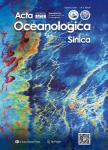Fish diversity and molecular taxonomy in the Prydz Bay during the 29th CHINARE
Fish diversity and molecular taxonomy in the Prydz Bay during the 29th CHINARE作者机构:Third Institute of OceanographyState Oceanic AdministrationXiamen 361005China Fujian Institute of OceanographyXiamen 361013China
出 版 物:《Acta Oceanologica Sinica》 (海洋学报(英文版))
年 卷 期:2018年第37卷第8期
页 面:15-20页
核心收录:
学科分类:0710[理学-生物学] 07[理学] 071002[理学-动物学]
基 金:Chinese Polar Environment Comprehensive Investigation and Assessment Program under contract Nos CHINARE2012-2015-01-05 CHINARE 2012-2015-04-01 and CHINARE 2017-04-03
主 题:DNA barcoding Prydz Bay Antarctic fish phylogenetic relationship barcoding gap
摘 要:In 2013, the 29th Chinese National Antarctic Research Expedition(CHINARE) prospected the Prydz Bay on the Antarctic continental shelf, and the Chinese R/V Xuelong icebreaker sampled all of the examined locations. The nature of Antarctic fish diversity in the high-latitude Prydz Bay is virtually unknown, and the accuracy of relevant estimates has not been established. Thus, it is necessary to evaluate this diversity and propose protective measures. In total, ninety-nine specimens were collected from various locations. To overcome uncertainties associated with identifying species based on morphology, DNA barcoding(COI gene) was employed to reconstruct phylogenetic relationships with delimited references from NCBI. Twenty-two species representing six families were unambiguously identified from a neighbor-joining(NJ) tree and barcoding gaps. With the morphological identification, thirteen species were identified correctly, five species were identified correctly at the genus level, and four species were identified at the close sister species level. Notothenioid dominance was not evident in the Prydz Bay, in contrast to other published studies. The low species diversity and catch biomass during this CHINARE were severely constrained by limited fishing methods and localized sites, which led to biased underestimation. Our analyses indicate that DNA barcoding is an effective tool for the identification of fish species in the Prydz Bay. The identification and distribution of Antarctic fish should be an integral component of understanding Antarctic fish biodiversity and biogeography, and large-scale studies are necessary for the further taxonomic identification of Antarctic fish.



